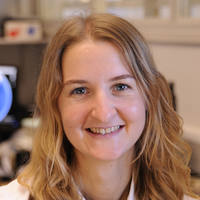Kellam Group
Virus Genomics
Archive Page
This page is maintained as a historical record and is no longer being updated.
Archive Page – this page is maintained as a historical record and is no longer being updated. It was last edited in 2016.
Although virus genomes are small they are incredibly diverse and subject to rapid genetic change. In addition, the host organisms viruses infected produce a wide array of defences encoded by genes that are also subjected to accelerated evolution. At the most extreme end of this evolution is the mutation and selection of unique B cells that produce antibodies to counter the diversity of virus proteins and provide immunological memory. The aim of the Virus Genomics team was to understand how genetic changes in viruses and hosts influence the biological properties of viral pathogenesis, persistence and host susceptibility to infection.
Our research spanned the breadth of virus and host genetic variation and was underpinned by computational methods and data resources directed towards investigating host and viral genetic variation. Our research was split over three areas of interest, virus genetics, immune repertoire genetics and host genetics. Our approach was to determine such ‘infection’ genetic variation and understand its consequences through functional molecular virology experiments.
Virus genetics
Through using next generation sequencing methods we were able to sequence the full genomes of many different viruses. We used next-generation sequencing to explore the genetic variation of respiratory virus infections including influenza A and influenza B viruses, human coronaviruses such as MERS-CoV and respiratory syncytial disease virus (RSV). We used the same methods to sequence full virus genomes of blood borne viruses such as HIV and HCV, and gastroenteritis viruses such as noroviruses and rotaviruses. We engaged in international collaborations to move full virus genome sequencing into national health services, to undertake large-scale virus genome-wide association studies and to use virus genetics to understand generalised virus epidemics. Our research studies into XMRV and MERS-CoV were featured by the media.
XMRV – Chronic Fatigue Syndrome is not caused by XMRV
International Severe Acute Respiratory Infection Consortium (ISARIC)
MERS-CoV – Sequencing the MERS coronavirus outbreak in Saudi Arabia
MERS-CoV – MERS-CoV genomes reveal complex transmission patterns
Host genetics
The host’s response to virus infection can range from asymptomatic, typical or a population average response or a severe response to infection, often when significant virus genetic variation is absent. Therefore, intrinsic aspects of how the host organism responds to infection must contribute to the range of pathogenicity. We used host whole genome and whole exome sequencing together with in vivo and in vitro molecular virology to understand the role of host genes in virus replication. In particular, we focused on genes of the Unfolded Protein Response (UPR) and their role in controlling virus replication and interferon stimulated genes such as InterFeron Inducible TransMembrane (IFITM) proteins and their role as virus entry restriction factors. Our research into IFITM3 has been covered widely by the media.
Amphotericin B – Anti-fungal drug increases flu susceptibility
IFITM3 – Genetics of flu susceptibility
TWIV180: Throwing IFIT at flu and holding a miR to HCV
B-cell immune repertoires
Once a virus infection is established cells of the adaptive immune system, namely B and T lymphocytes proliferate in response to virus antigens to both control virus replication and provide immunological memory thereby preventing reinfection. The diversity of the B-cell immune repertoire is conferred by recombination of variable (V), diversity (D) and joining (J) genes of the B-cell locus that form the VDJ rearranged B-cell receptor. We used NGS to follow this B-cell repertoire diversity, plus extra diversity generated by somatic hypermutation during normal B-cell immunological function and diseases of B-cell such as lymphomas.
Our people
Core team

Swee Hoe Ong
Principal Software Developer
Previous core team members

Irene Bassano
Postdoctoral Fellow

Spela Binter
Advanced Research Assistant

Dr Matthew Cotten
Senior Staff Scientist

Dr Astrid Gall
Staff Scientist

Dr Nick Grayson
Bioinformatician

Bas Oude Munnink
Postdoctoral Fellow

Dr Velislava Petrova
Postdoctoral Fellow

Dr My Phan
Postdoctoral Fellow

Dr Sarah Smith
Postdoctoral Fellow

Simon Watson
Senior Software Developer
